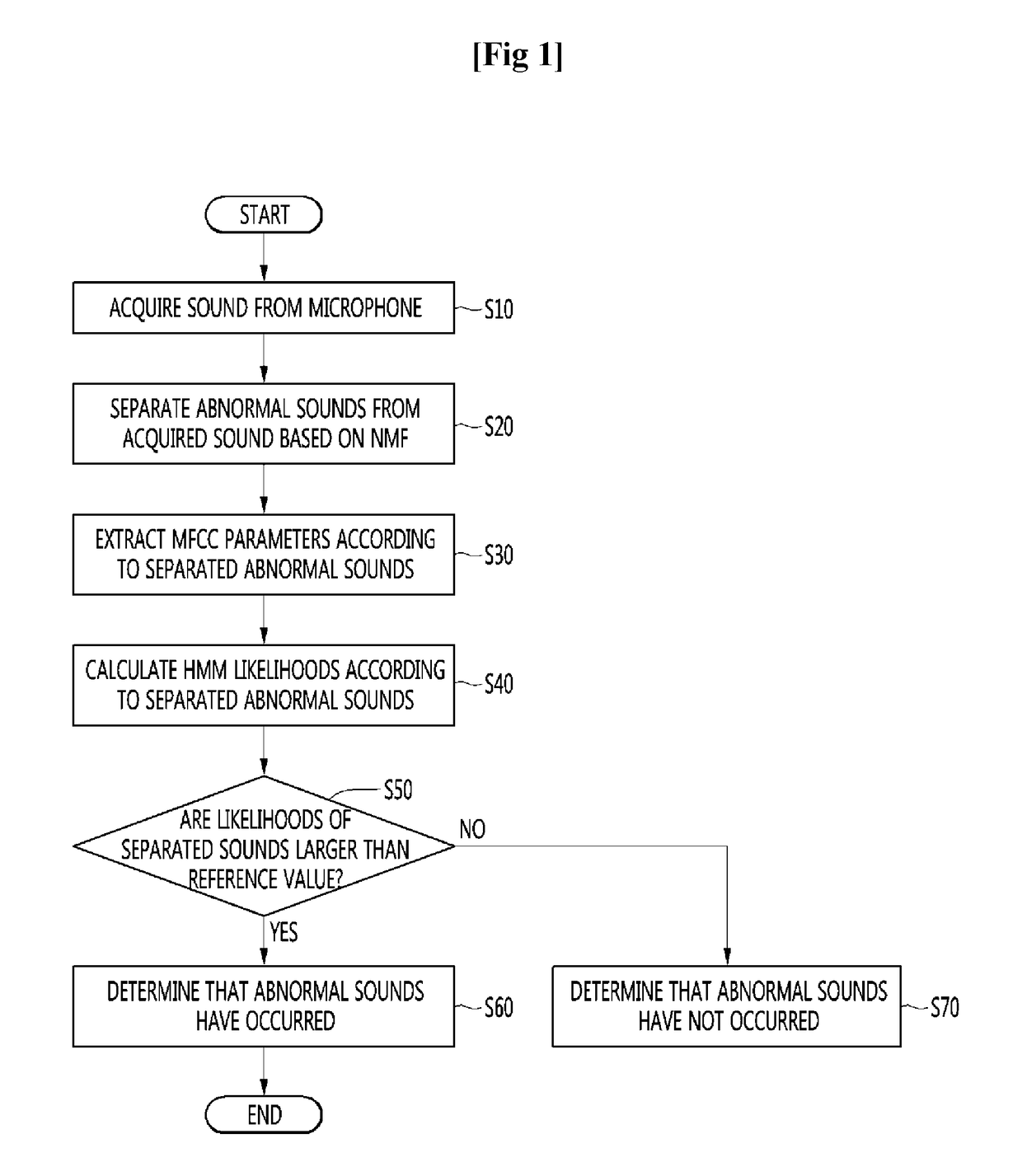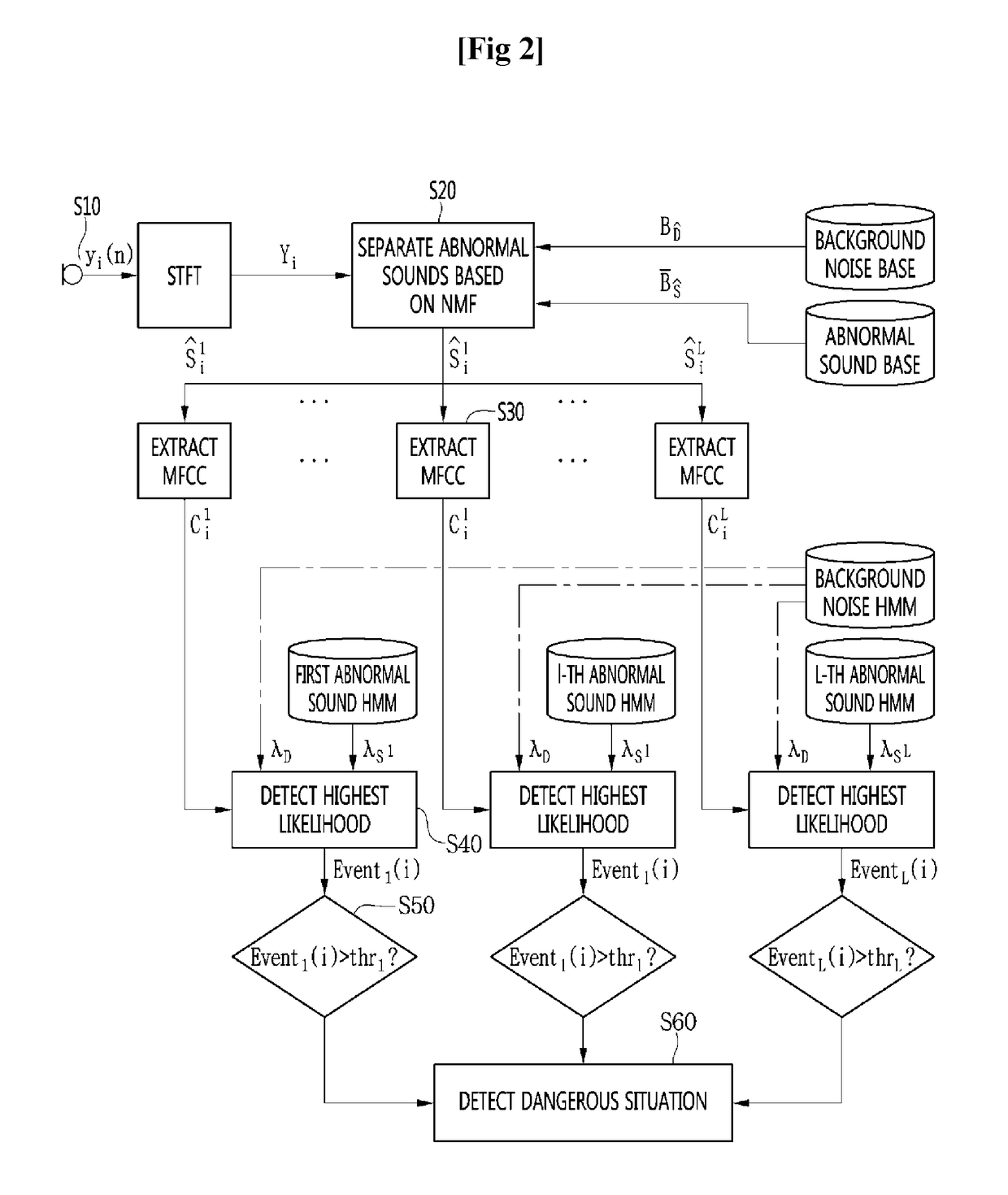Sound Detection Method for Recognizing Hazard Situation
a detection method and hazard technology, applied in the field of sound monitoring methods, can solve the problems of inability to continuously monitor the surveillance area, the surveillance system may not fully achieve its role, and the crime rate is not being reduced, so as to achieve the effect of rapid recognition of the occurrence of a crim
- Summary
- Abstract
- Description
- Claims
- Application Information
AI Technical Summary
Benefits of technology
Problems solved by technology
Method used
Image
Examples
Embodiment Construction
[0026]Hereinafter, embodiments will be described in detail with reference to the accompanying drawings. The embodiments may, however, be embodied in many different forms and should not be construed as being limited to the embodiments set forth herein; rather, alternate embodiments falling within the spirit and scope can be seen as included in the present disclosure.
[0027]The present disclosure proposes a method of simultaneously performing sound source separation and acoustic event detection to improve the accuracy in detecting a surrounding acoustic event at a low signal-to-noise (SNR). According to an embodiment of the present disclosure, event sounds are separated from ambient noise through non-negative matrix factorization (NMF), and a probability-based test is performed for each separated sound using a hidden Markov model (HMM) to determine whether an acoustic event has occurred.
[0028]FIG. 1 is a flowchart sequentially illustrating a method of detecting a sound according to an ...
PUM
 Login to View More
Login to View More Abstract
Description
Claims
Application Information
 Login to View More
Login to View More - R&D
- Intellectual Property
- Life Sciences
- Materials
- Tech Scout
- Unparalleled Data Quality
- Higher Quality Content
- 60% Fewer Hallucinations
Browse by: Latest US Patents, China's latest patents, Technical Efficacy Thesaurus, Application Domain, Technology Topic, Popular Technical Reports.
© 2025 PatSnap. All rights reserved.Legal|Privacy policy|Modern Slavery Act Transparency Statement|Sitemap|About US| Contact US: help@patsnap.com



